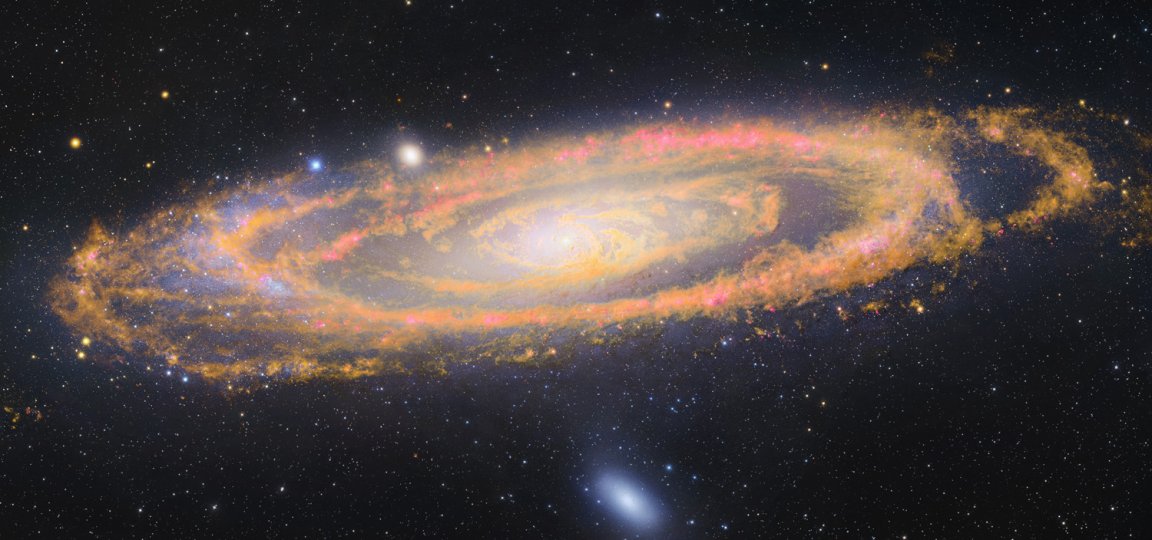

Our closest galactic neighbor, called the Andromeda Galaxy (also known as Messier 31), is superior to the Milky Way in pretty much every way. For instance, while the Milky Way has a diameter of about 100,000 light-years, Andromeda is about twice as large (some estimates suggest it’s around 220,000 light years across), and where the Milky Way has 400 billion stars, Andromeda has about one TRILLION.
Many of these stars are high-mass, blue-white stars that assemble themselves into sweeping, but slightly-warped spiral arms. Providing contrast is a number of darkish dust lanes, which wind into, and around, Andromeda’s central core. Naturally, like most large galaxies, a gargantuan black hole looms in Andromeda’s nucleus. It has the mass of between 30 million and 100 million Suns, making it about ten times larger than the Milky Way’s central black hole.
This image is a synthetic color composite, created using archive images of the galaxy at optical and infrared wavelengths. Visible light data was collected by various space and ground-based observatories, while infrared data was gathered by NASA’s Spitzer Space Telescope. In post processing, the data was put through red and green color channels, which exaggerate Andromeda’s lumpy dust lanes, and the young stars that provide warmth. These dusty regions are pictured in orange.
On his website, Gendler remarked:
Based on observations made with the NASA/ESA Hubble Space Telescope, and obtained from the Hubble Legacy Archive, which is a collaboration between the Space Telescope Science Institute (STScI/NASA), the Space Telescope European Coordinating Facility (ST-ECF/ESA) and the Canadian Astronomy Data Centre (CADC/NRC/CSA).
The H alpha data come from the Local Group Galaxies Survey (Massey et al. 2006, Astrophysical Journal, 131, 2701) and are based on images taken with the Mayall 4-meter telescope at Kitt Peak National Observatory, National Optical Astronomy Observatory, which is operated by the Association of Universities for Research in Astronomy under cooperative agreement with the National Science Foundation.
The Spitzer Space Telescope World Wide Web Site is the result of a collaborative effort by the Education and Public Outreach team at the Spitzer Science Center (SSC), California Institute of Technology.
Additionally, several companions galaxies are in view, including Messier 110 (pictured below) and Messier 32 (seen above the primary galaxy). Both are much smaller than Andromeda itself, which happens to be the largest and most massive galaxy in our local group.

To compare visible light images to Gendler’s infrared view, click here. (See a larger image here.)